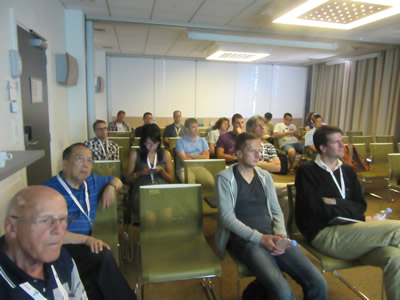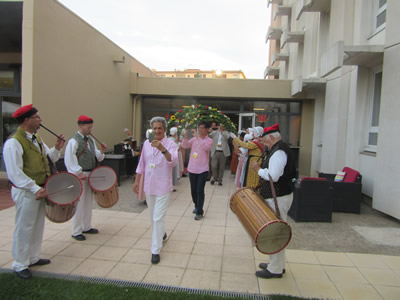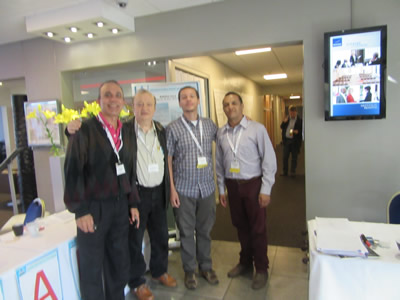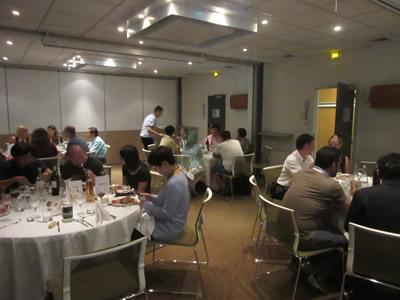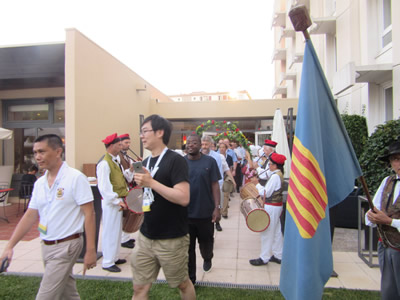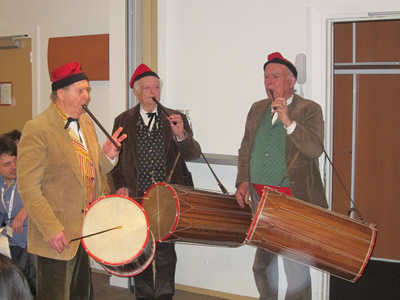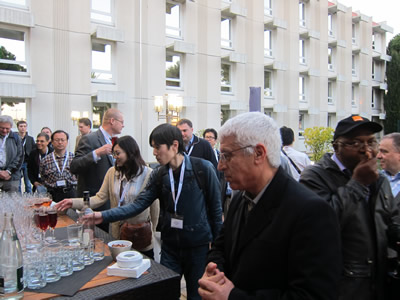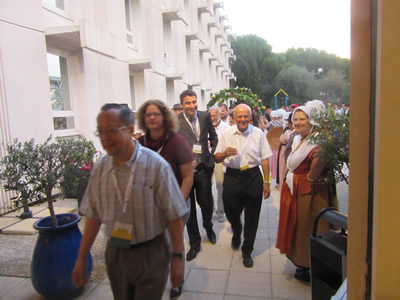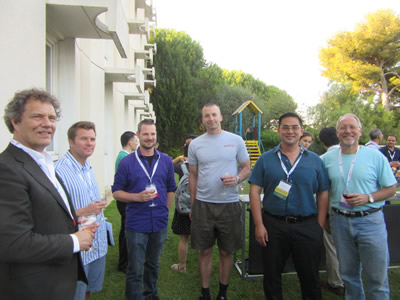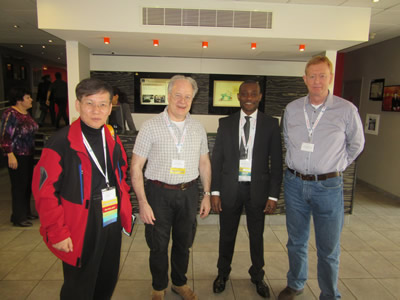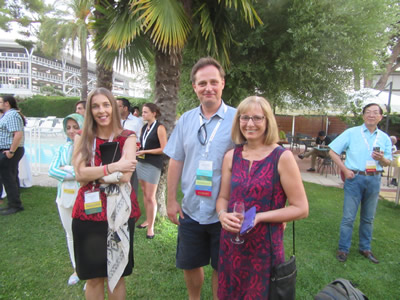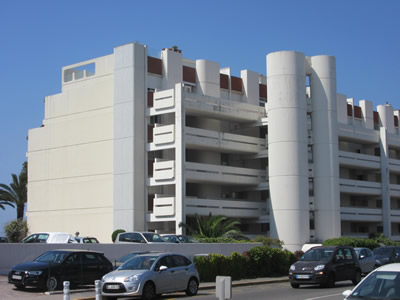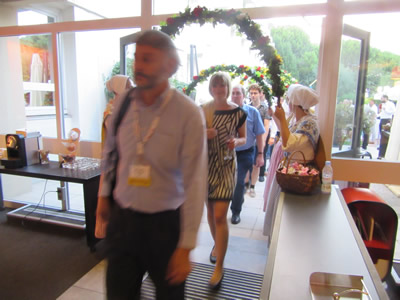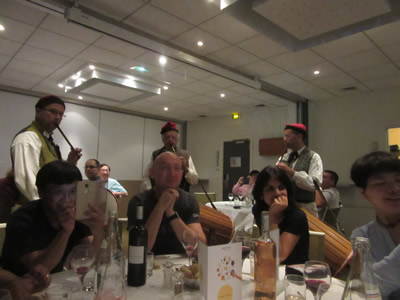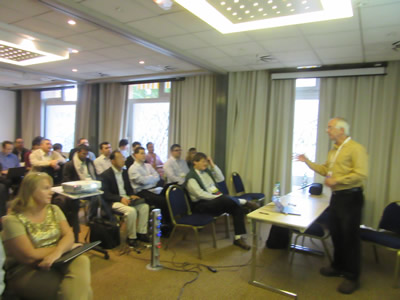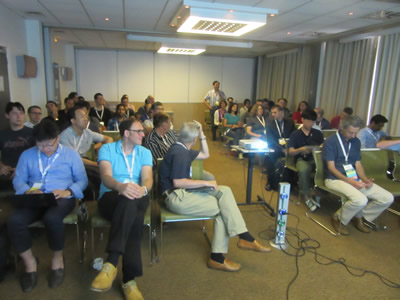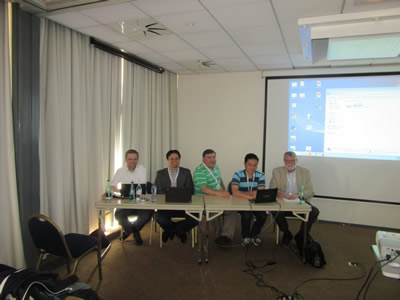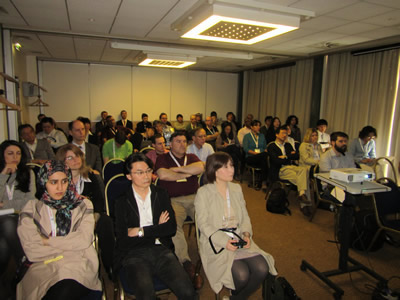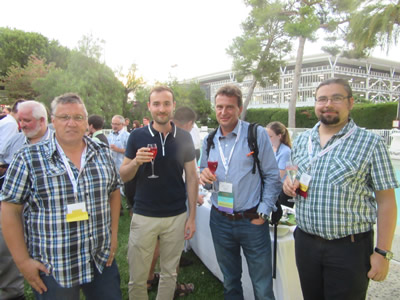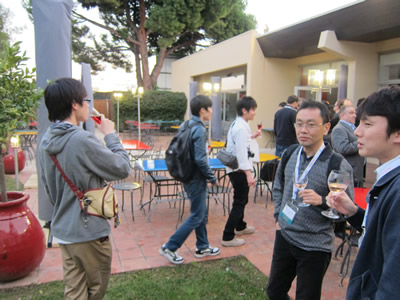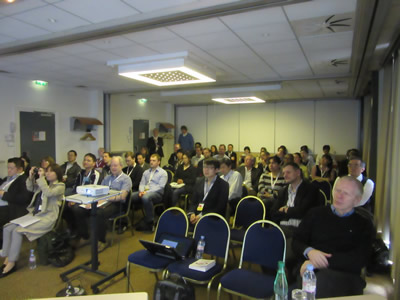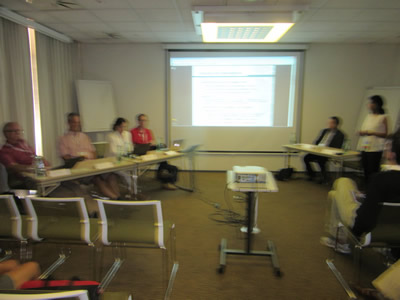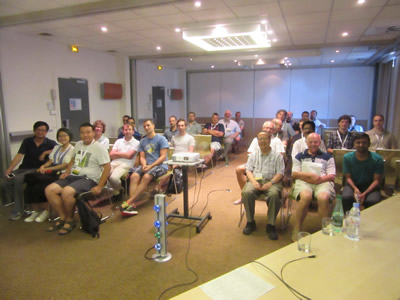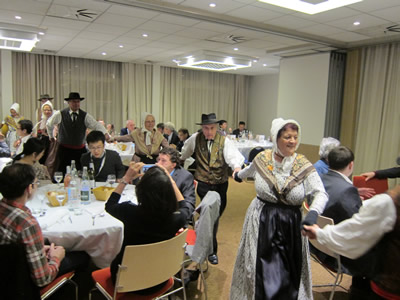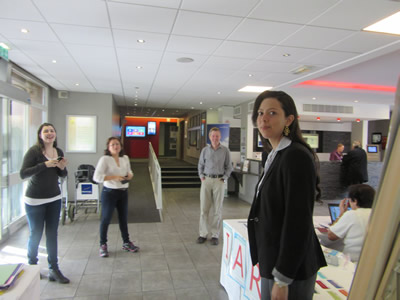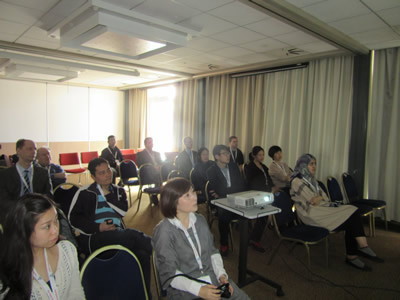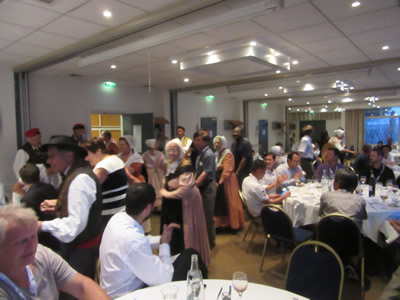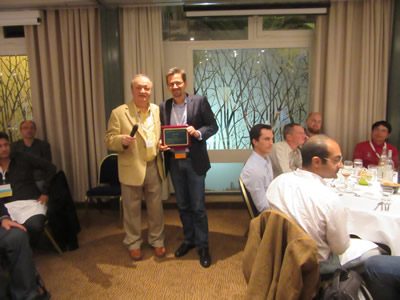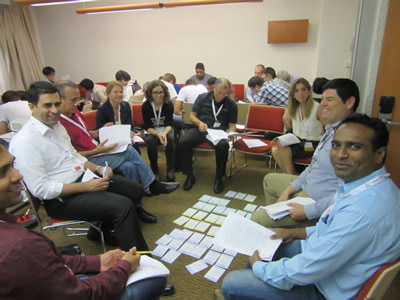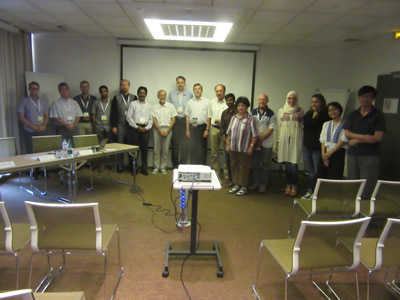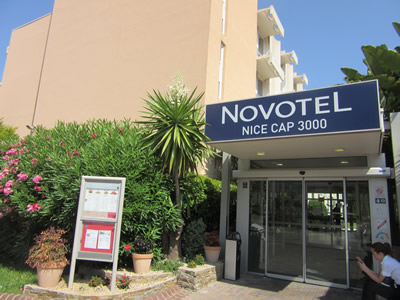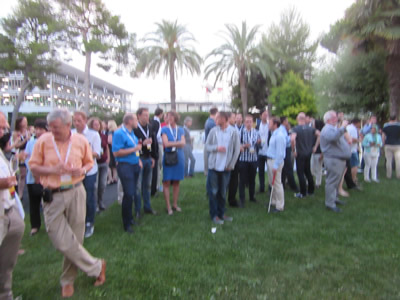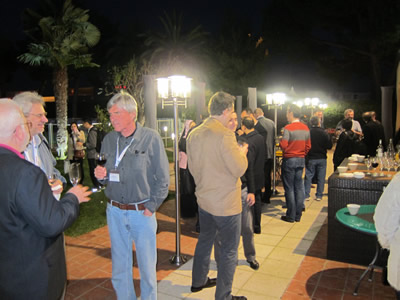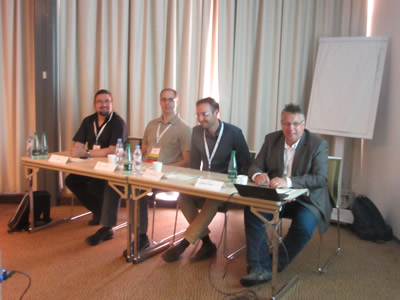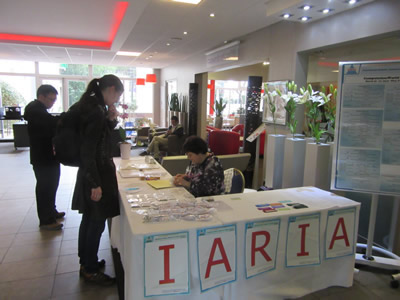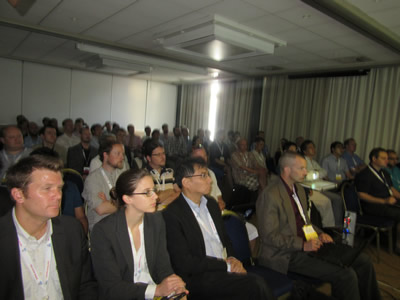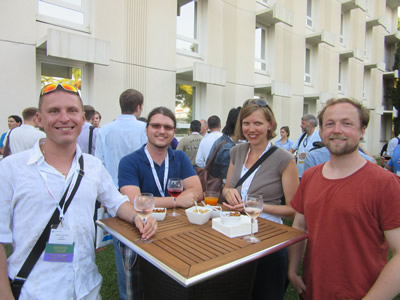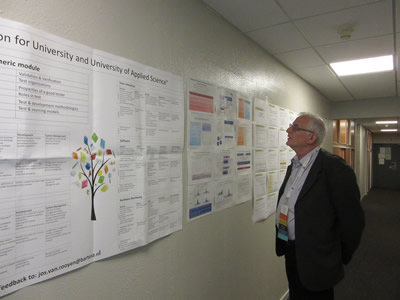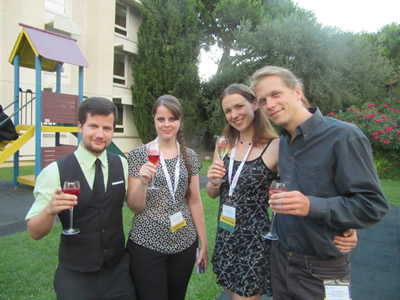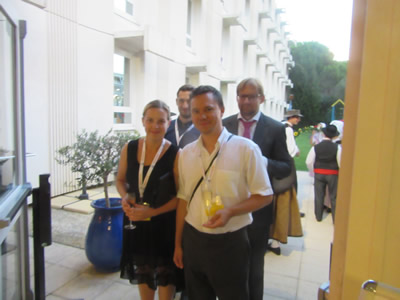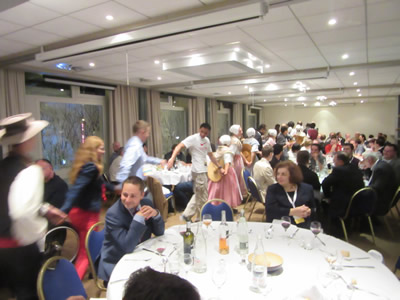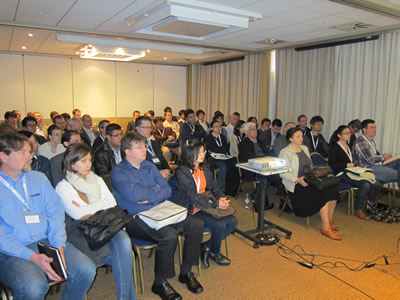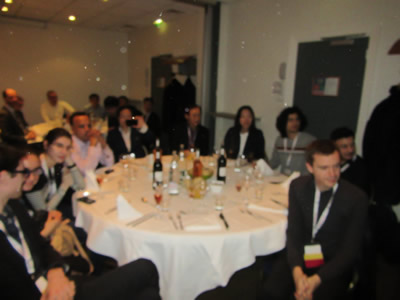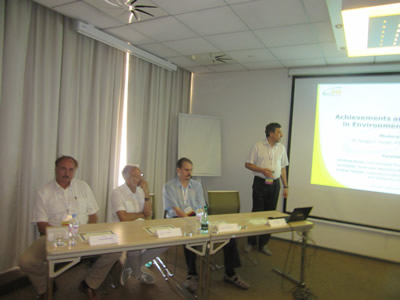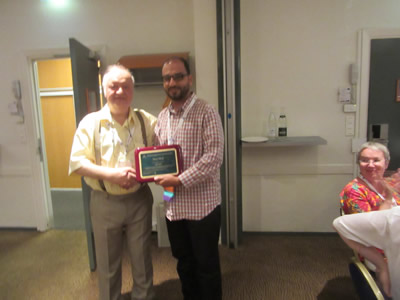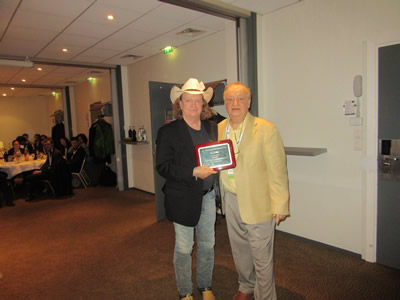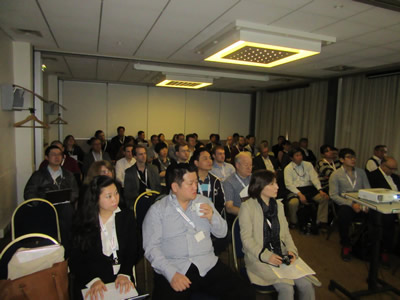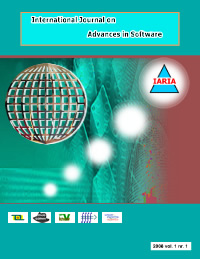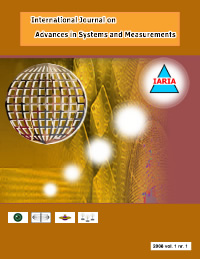VALID 2018 - The Tenth International Conference on Advances in System Testing and Validation Lifecycle
October 14, 2018 - October 18, 2018
VALID 2018: Call for Papers
Complex distributed systems with heterogeneous interconnections operating at different speeds and based on various nano- and micro-technologies raise serious problems of testing, diagnosing, and debugging. Despite current solutions, virtualization and abstraction for large scale systems provide less visibility for vulnerability discovery and resolution, and make testing tedious, sometimes unsuccessful, if not properly thought from the design phase.
The conference on advances in system testing and validation considers the concepts, methodologies, and solutions dealing with designing robust and available systems. Its target covers aspects related to debugging and defects, vulnerability discovery, diagnosis, and testing.
The conference VALID 2018 continues a series of events focusing on designing robust components and systems with testability for varia features of behavior and interconnection. The conference will provide a forum where researchers shall be able to present recent research results and new research problems and directions related to them. The conference seeks contributions presenting novel result and future research in all aspects of robust design methodologies, vulnerability discovery and resolution, diagnosis, debugging, and testing.
We solicit both academic, research, and industrial contributions. We welcome technical papers presenting research and practical results, position papers addressing the pros and cons of specific proposals, such as those being discussed in the standard fora or in industry consortia, survey papers addressing the key problems and solutions on any of the above topics short papers on work in progress, and panel proposals.
Industrial presentations are not subject to the format and content constraints of regular submissions. We expect short and long presentations that express industrial position and status.
Tutorials on specific related topics and panels on challenging areas are encouraged.
The topics suggested by the conference can be discussed in term of concepts, state of the art, research, standards, implementations, running experiments, applications, and industrial case studies. Authors are invited to submit complete unpublished papers, which are not under review in any other conference or journal in the following, but not limited to, topic areas.
All topics and submission formats are open to both research and industry contributions.
VALID 2018 conference tracks:
Trends and achievements
Testing and validating Industry 4.0 applications; Testing and validating Internet of Things (IoT) systems; Big Datasets validation; Validate patch generation systems; Automation in defect prediction models; Automated test suite for time-continuous models; Learning semantics for defect prediction; Variability and bug-finding; Mining sandboxes; Validation confidence quantification; Validating mission-critical applications; Validating accessibility requirements; Validation prediction-oriented applications; Validation of high-risk applications and systems; Testing and validation of Internet of Vehicle (IoV) systems
Robust design methodologies
Designing methodologies for robust systems; Secure software techniques; Industrial real-time software; Defect avoidance; Cost models for robust systems; Design for testability; Design for reliability and variability; Design for adaptation and resilience; Design for fault-tolerance and fast recovery; Design for manufacturability, yield and reliability; Design for testability in the context of model-driven engineering
Vulnerability discovery and resolution
Vulnerability assessment; On-line error detection; Vulnerabilities in hardware security; Self-calibration; Alternative inspections; Non-intrusive vulnerability discovery methods; Embedded malware detection
Defects and Debugging
Debugging techniques; Component debug; System debug; Software debug; Hardware debug; System debug; Power-ground defects; Full-open defects in interconnecting lines; Physical defects in memories and microprocessors; Zero-defect principles
Diagnosis
Diagnosis techniques; Advances in silicon debug and diagnosis; Error diagnosis; History-based diagnosis; Multiple-defect diagnosis; Optical diagnostics; Testability and diagnosability; Diagnosis and testing in mo bile environments
System and feature testing
Test strategy for systems-in-package; Testing embedded systems; Testing high-speed systems; Testing delay and performance; Testing communication traffic and QoS/SLA metrics; Testing robustness; Software testing; Hardware testing; Supply-chain testing; Memory testing; Microprocessor testing; Mixed-signal production test; Testing multi-voltage domains; Interconnection and compatibility testing; SAT procedures for application to testing and formal verification
Testing techniques and mechanisms
Fundamentals for digital and analog testing; Emerging testing methodologies; Engineering test coverage; Designing testing suites; Statistical testing; Functional testing; Parametric testing; Defect- and data-driven testing; Automated testing; Embedded testing; Autonomous self-testing; Low cost testing; Optimized testing; Testing systems and devices; Test standards
Testing of wireless communications systems
Testing of mobile wireless communication systems; Testing of wireless sensor networks; Testing of radio-frequency identification systems; Testing of ad-hoc networks; Testing methods for emerging standards; Hardware-based prototyping of wireless communication systems; Physical layer performance verification; On-chip testing of wireless communication systems; Modeling and simulation of wireless channels; Noise characterization and validation; Case studies and industrial applications of test instruments;
Software verification and validation
High-speed interface verification and fault-analysis; Software testing theory and practice; Model-based testing; Verification metrics; Service/application specific testing; Model checking; OO software testing; Testing embedded software; Quality assurance; Empirical studies for verification and validation; Software inspection techniques; Software testing tools; New approaches for software reliability verification and validation
Quality-assessment of software architectures and legacy systems
Quality-Assessment of Software Architectures and Legacy systems; Quality-assessment of software architectures; Validation and verification of software architecture; Automatic analysis of legacy code; Strategies for isolating legacy code and improving the design quality; Metrics for evaluating architectural quality characteristics; Tools for quality assessments of software architectures; Techniques and tools for testing legacy systems
Testing and validation of run-time evolving systems
Automated testing for run-time evolving systems; Testing and validation of evolving systems; Testing and validation of self-controlled systems; Testing compile-time versus run-time dependency for evolving systems; On-line validation and testing of evolving at run-time systems; Modeling for testability of evolving at run-time systems; Near real-time and real-time monitoring of run-time evolving systems; Verification and validation of reflective models for testing; Verification and validation of fault tolerance in run-time evolving systems
Feature-oriented testing
Testing user interfaces and user-driven features; Privacy testing; Ontology accuracy testing; Testing semantic matching; Testing certification processes; Testing authentication mechanisms; Testing biometrics methodologies and mechanisms; Testing cross-nation systems; Testing system interoperability; Testing system safety; Testing system robustness; Testing temporal constraints; Testing transaction-based properties; Directed energy test capabilities /microwave, laser, etc./; Testing delay and latency metrics
Domain-oriented testing
Testing autonomic and autonomous systems; Testing intrusion prevention systems; Firewall testing; Information assurance testing; Testing social network systems; Testing recommender systems; Testing biometric systems; Testing diagnostic systems; Testing on-line systems; Testing financial systems; Testing life threatening systems; Testing emergency systems; Testing sensor-based systems; Testing testing systems
Deadlines:
Submission | Jun 28, 2018 |
Notification | Jul 31, 2018 |
Registration | Aug 12, 2018 |
Camera ready | Aug 22, 2018 |
Deadlines differ for special tracks. Please consult the conference home page for special tracks Call for Papers (if any).
INSTRUCTION FOR THE AUTHORS
Authors of selected papers will be invited to submit extended versions to one of the IARIA Journals.
Publisher: XPS (Xpert Publishing Services)
Archived: ThinkMindTM Digital Library (free access)
Prints available at Curran Associates, Inc.
How to submit to appropriate indexes.
Only .pdf or .doc files will be accepted for paper submission. All received submissions will be acknowledged via an automated system.
Contribution types
- regular papers [in the proceedings, digital library]
- short papers (work in progress) [in the proceedings, digital library]
- ideas: two pages [in the proceedings, digital library]
- extended abstracts: two pages [in the proceedings, digital library]
- posters: two pages [in the proceedings, digital library]
- posters: slide only [slide-deck posted on www.iaria.org]
- presentations: slide only [slide-deck posted on www.iaria.org]
- demos: two pages [posted on www.iaria.org]
FORMATS
Only .pdf or .doc files will be accepted for paper submission. All received submissions will be acknowledged via an automated system.
Final author manuscripts will be 8.5" x 11", not exceeding 6 pages; max 4 extra pages allowed at additional cost.
Helpful information for paper formatting for MS Word can be found here.
There is a community provided LaTeX template: the CTAN package iaria (with full IARIA formatting rules, including IARIA citation style, but for providing citation style it is tightly bound to pdflatex+biblatex+biber). In addition, there is also iaria-lite (not bound to pdflatex+biblatex+biber, but compatible with any TeX stack; thus, it cannot provide the IARIA citation formattings, but only the titlepage and content-related IARIA formatting rules). Based on the iaria package, there is a minimal working example as Overleaf template. When you are using the LaTeX templates, please still adhere to the additional editorial rules.
Slides-based contributions can use the corporate/university format and style.
Your paper should also comply with the additional editorial rules.
Once you receive the notification of contribution acceptance, you will be provided by the publisher an online author kit with all the steps an author needs to follow to submit the final version. The author kits URL will be included in the letter of acceptance.
We would recommend that you should not use too many extra pages, even if you can afford the extra fees. No more than 2 contributions per event are recommended, as each contribution must be separately registered and paid for. At least one author of each accepted paper must register to ensure that the paper will be included in the conference proceedings and in the digital library, or posted on the www.iaria.org (for slide-based contributions).
CONTRIBUTION TYPE
Regular Papers (up to 6-10 page article -6 pages covered the by regular registration; max 4 extra pages allowed at additional cost- ) (oral presentation)
These contributions could be academic or industrial research, survey, white, implementation-oriented, architecture-oriented, white papers, etc. They will be included in the proceedings, posted in the free-access ThinkMind digital library and sent for indexing. Please submit the contributions following the instructions for the regular submissions using the "Submit a Paper" button and selecting the appropriate contribution type. 12-14 presentation slides are suggested.
Short papers (work in progress) (up to 4 pages long) (oral presentation)
Work-in-progress contributions are welcome. These contributions represent partial achievements of longer-term projects. They could be academic or industrial research, survey, white, implementation-oriented, architecture-oriented, white papers, etc. Please submit the contributions following the instructions for the regular submissions using the "Submit a Paper" button and selecting the contribution type as work in progress. Contributors must follow the conference deadlines, describing early research and novel skeleton ideas in the areas of the conference topics. The work will be published in the conference proceedings, posted in the free-access ThinkMind digital library and sent for indexing. For more details, see the Work in Progress explanation page. 12-14 presentation slides are suggested.
Ideas contributions (2 pages long) (oral presentation)
This category is dedicated to new ideas in their very early stage. Idea contributions are expression of yet to be developed approaches, with pros/cons, not yet consolidated. Ideas contributions are intended for a debate and audience feedback. Please submit the contributions following the instructions for the regular submissions using the "Submit a Paper" button and selecting the contribution type as Idea. Contributors must follow the conference deadlines, describing early research and novel skeleton ideas in the areas of the conference topics. The work will be published in the conference proceedings, posted in the free-access ThinkMind digital library and sent for indexing. For more details, see the Ideas explanation page. 12-14 presentation slides are suggested.
Extended abstracts (2 pages long) (oral presentation)
Extended abstracts summarize a long potential publication with noticeable results. It is intended for sharing yet to be written, or further on intended for a journal publication. Please submit the contributions following the instructions for the regular submissions using the "Submit a Paper" button and selecting the contribution type as Extended abstract. Contributors must follow the conference deadlines, describing early research and novel skeleton ideas in the areas of the conference topics. The work will be published in the conference proceedings, posted in the free-access ThinkMind digital library and sent for indexing. 12-14 presentation slides are suggested.
Posters (paper-based, two pages long) (oral presentation)
Posters are intended for ongoing research projects, concrete realizations, or industrial applications/projects presentations. The poster may be presented during sessions reserved for posters, or mixed with presentation of articles of similar topic. A two-page paper summarizes a presentation intended to be a POSTER. This allows an author to summarize a series of results and expose them via a big number of figures, graphics and tables. Please submit the contributions following the instructions for the regular submissions using the "Submit a Paper" button and selecting the contribution type as Poster Two Pages. Contributors must follow the conference deadlines, describing early research and novel skeleton ideas in the areas of the conference topics. The work will be published in the conference proceedings, posted in the free-access ThinkMind digital library and sent for indexing. 8-10 presentation slides are suggested. Also a big Poster is suitable, used for live discussions with the attendees, in addition to the oral presentation.
Posters (slide-based, only) (oral presentation)
Posters are intended for ongoing research projects, concrete realizations, or industrial applications/projects presentations. The poster may be presented during sessions reserved for posters, or mixed with presentation of articles of similar topic. The slides must have comprehensive comments. This type of contribution only requires a 8-10 slide-deck. Please submit the contributions following the instructions for the regular submissions using the "Submit a Paper" button and selecting the contribution type as Poster (slide-only). The slide-deck will be posted, post-event, on www.iaria.org.
8-10 presentation slides are suggested. Also a big Poster is suitable, used for live discussions with the attendees, additionally to the oral presentation.
Presentations (slide-based, only) (oral presentation)
These contributions represent technical marketing/industrial/business/positioning presentations. This type of contribution only requires a 12-14 slide-deck. Please submit the contributions following the submission instructions by using the "Submit a Paper" button and selecting the contribution type as Presentation (slide-only). The slide-deck will be posted, post-event, on www.iaria.org.
12-14 presentation slides are suggested.
Demos (two pages) [posted on www.iaria.org]
Demos represent special contributions where a tool, an implementation of an application, or a freshly implemented system is presented in its alfa/beta version. It might also be intended for thsoe new application to gather the attendee opinion. A two-page summary for a demo is intended to be. It would be scheduled in special time spots, to ensure a maximum attendance from the participants. Please submit the contributions following the submission instructions by using the "Submit a Paper" button and selecting the contribution type as Demos. The Demos paper will be posted, post-event, on www.iaria.org.
Tutorial proposals
Tutorials provide overviews of current high interest topics. Proposals should be for 2-3 hour long. Proposals must contain the title, the summary of the content, and the biography of the presenter(s). The tutorial slide decks will be posted on the IARIA site.
Please send your proposals to tutorial proposal
Panel proposals
The organizers encourage scientists and industry leaders to organize dedicated panels dealing with controversial and challenging topics and paradigms. Panel moderators are asked to identify their guests and manage that their appropriate talk supports timely reach our deadlines. Moderators must specifically submit an official proposal, indicating their background, panelist names, their affiliation, the topic of the panel, as well as short biographies. The panel slide deck will be posted on the IARIA site.
Please send your proposals to panel proposal
